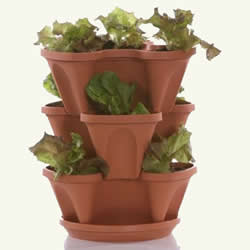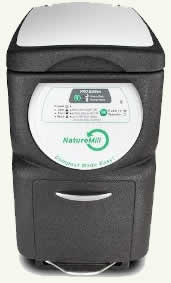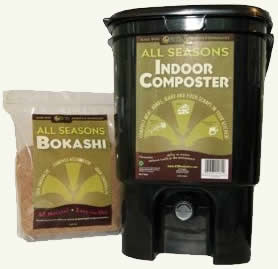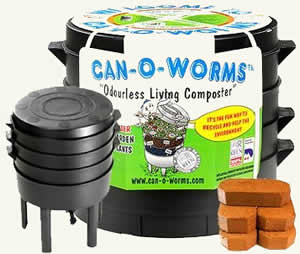Composting makes a lot of environmental sense; it saves space in landfills and provides you with healthy organic material to nourish your plants. Many people believe that to produce compost you should have a garden, however that is definitely not the case. Compost is a valuable product for anyone that does container gardening, as shown in Figure 1.

Figure 1 - Container gardening
Indoor composting is relatively new. All you need is a small amount of space, which most individuals can find in a garage, on a balcony or you can use that wasted space under your kitchen sink.
Selection of indoor composters.
There are basically four different methods for indoor composting:
- High Technology Indoor Composting:

Figure 2 - Computer controlled indoor composter
- Compost Starters:
As the popularity of indoor composting has taken hold, there are product manufactures that provide computer controlled composters designed for indoor applications. Of all the methods of indoor composting using a computer controlled composter, as shown in Figure 2, is by far the easiest method.
As you generate food waste you simply add it to the composter. The composter mixes the waste, provides air flow through the waste, heats the waste and controls the moisture levels within the waste. A carbon filter removes any residual odors.
The computer controlled composter will process 120 lbs of food waste every month and deliver fresh compost every couple of weeks.
These computer controlled composters will compost meat and dairy products as well as vegetable waste.
The biggest advantage with a computer controlled composting appliances is that it requires little care and ongoing intervention in the composting process.
The biggest negative to computer controlled indoor composters is that they are relatively expensive – in the order of $350.

Figure 3 - Indoor composter using a compost starter
- Worm Composting or Vermicomposting:
The second method of indoor composting is to use a compost starter product mixed into the kitchen waste material. This process is similar to adding a starter in order to make Sour Dough bread. Although there are many types of compost starters on the market, one of the most common compost starters is a product called Bokashi. Bokashi is a made by fermenting wheat bran with molasses and SCD Probiotics.
This style of indoor composter is usually sold as kit that has a container and a package of the Bokashi compost starter, as shown in Figure 3.
The operation of a composter using a starter is quite simple. You load the container with food scraps, including meat and dairy products, cover with a layer of the compost starter and continue until the container is full.
It should be noted that some people find the odor, when the container is opened, to be quite offensive.
Units that use a compost starter sell for approximately $60.00

Figure 5 - Indoor composter using a compost starter
- Aerobic Composting:
Worm composting or vermicomposting as it is technically called uses red worms to basically digest the organic waste from the kitchen. The material that remains is compost.
There are many websites that devote themselves to vermicomposting and I will not go into detail.
You can purchase a container that is designed for vermicomposting, as shown in Figure 4 and 5, or you can build your own. An Internet search on vermicomposting
, will bring up many designs for the home construction of a worm composting containers.
Personally I find vermicomposting to be more complex and labor intensive then either of the two previously mentioned methods of composting – a computer appliance or using a compost starter. As well, the thought of having a lot of worms in my kitchen does not mentally go well with making dinner!
Aerobic composting is the technique or principle that is used to create compost outdoors. While there are many websites that devote themselves to the design and construction of indoor aerobic composting containers, I, without trying any of them, have a problem with what I believe will be the odor created. I know what my outdoor composter smells like and I sure wouldn’t want that smell inside my home.
If using aerobic composting is of interest, I suggest you do an Internet search for indoor aerobic composting
, you will end up with a vast number of websites that devote themselves to this technique.
If you are planning on purchasing an indoor composter read the product information carefully. Many products that are found under indoor composting
are nothing more than containers to store food waste so that you can later deposit it in an outdoor composter.
If you are interested in an indoor container to store food waste for deposit into an outdoor composter I highly recommend that you purchase one that has a carbon filter of some type in order to avoid having the odors of decomposing food in your kitchen.
Additional information on: Container gardening.
